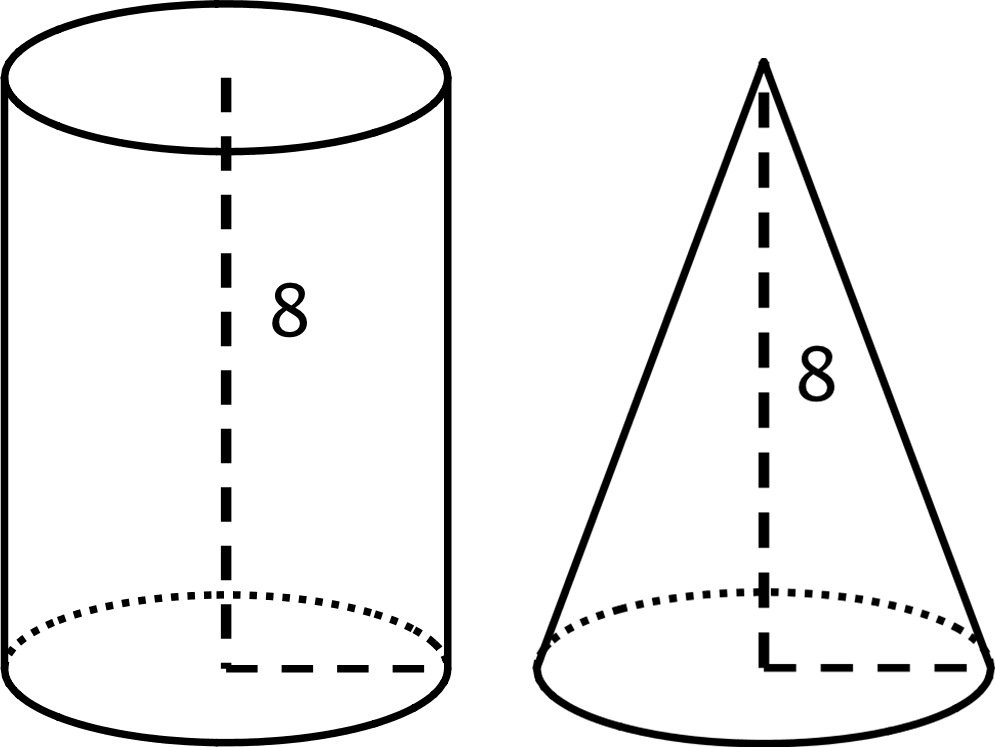15.1: Which Has a Larger Volume?
The cone and cylinder have the same height, and the radii of their bases are equal.
- Which figure has a larger volume?
- Do you think the volume of the smaller one is more or less than $\frac12$ the volume of the larger one? Explain your reasoning.

- Here is a method for quickly sketching a cone:

- Draw an oval.
- Draw a point centered above the oval.
- Connect the edges of the oval to the point.
- Which parts of your drawing would be hidden behind the object? Make these parts dashed lines.




